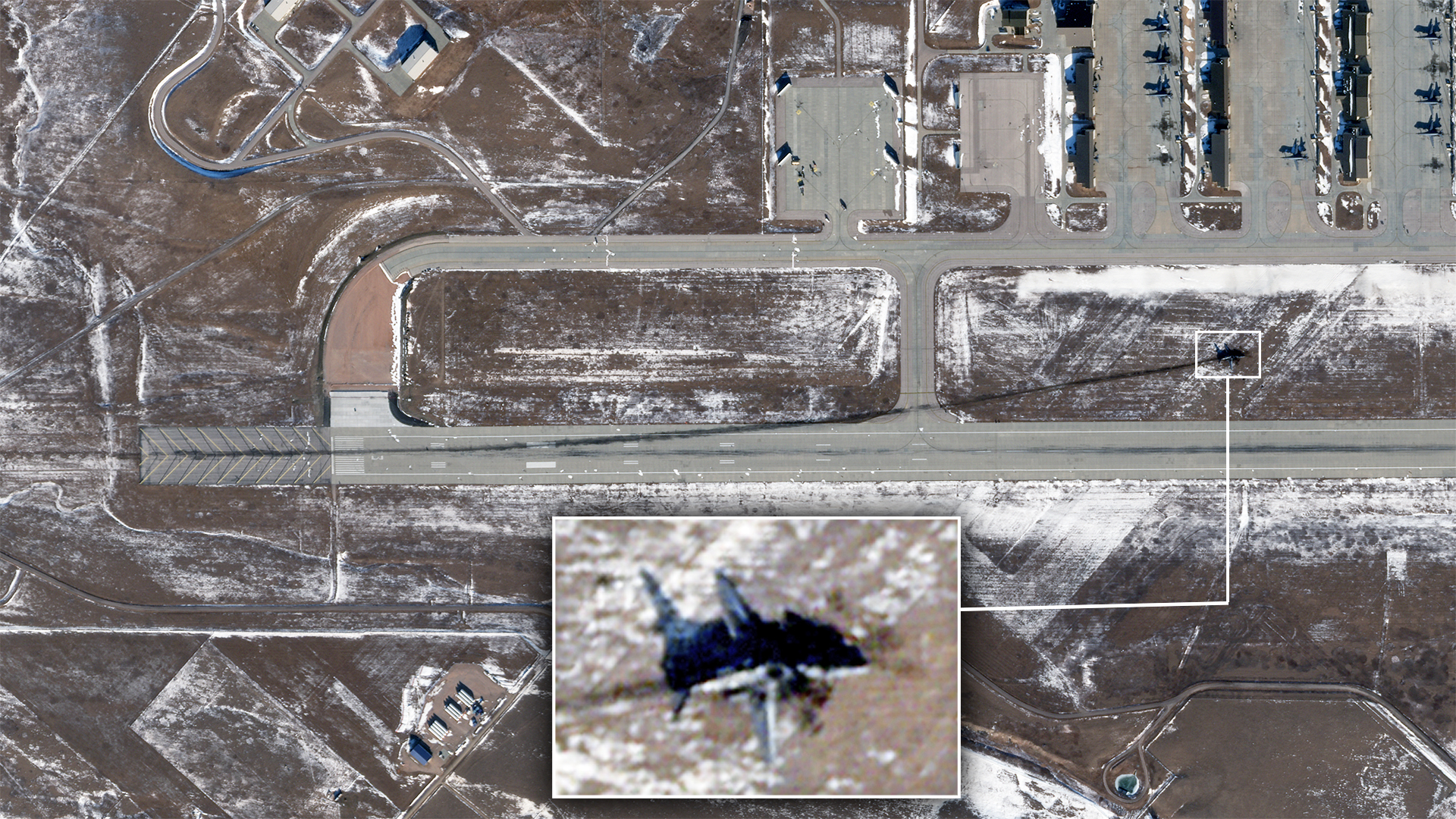Newly obtained satellite imagery provides our best view so far of the aftermath of last week’s crash of a U.S. Air Force B-1B Lancer bomber at Ellsworth Air Force Base in South Dakota. The images also give a very clear indication of when and where the jet touched down and where it ended up. You can read our initial reporting on this mishap here, as well as an analysis from The War Zone of webcam photos showing the wreck of the bomber here.
The satellite imagery, from Planet Labs, shows the B-1’s current resting place after it crashed while attempting to land at Ellsworth, the home base of the 28th Bomb Wing.

It appears that the bomber impacted the ground just before the runway threshold. Prominent black marks suggestive of the impact/touchdown point are visible just before the chevrons that demarcate the threshold area. This scarring does not exist in imagery taken of the base in months past.


The aircraft then veered to the left and off the runway, leaving a thick black track in its wake. The B-1 ended up on its belly on a patch of grass at the northern end of Ellsworth between the base’s runway and the main taxiway.

An unofficial image purportedly showing the foam-covered B-1 on the ground has also emerged on social media, suggesting, as we previously reported, that the aircraft has likely suffered catastrophic damage. Although not visible in this view, other imagery indicates that the entire front nose and fuselage section collapsed and/or burned out.
The Air Force earlier confirmed that all four of the bomber’s crew ejected safely, three of them being treated on the base for minor injuries before being released, and one being admitted to a local hospital with non-life-threatening injuries.
In response to questions from The War Zone, including about the current status of the rest of the B-1 fleet, an Air Force Global Strike Command (AFGSC) spokesperson said there is currently “no new information on the B-1 incident.”
“Ellsworth AFB will convene a board to investigate the incident,” the spokesperson added. “The Air Force will conduct a thorough investigation to determine the cause of the accident. Results from those boards will take time in the order of months from now. Additional information will be released as it becomes available.”

The current active B-1 fleet numbers 45 aircraft, including the one involved in the mishap. AFGSC lists only one other significant B-1 mishap in the last nine years — an engine fire in 2022, which we reported on at the time. However, the B-1 fleet has had several less serious mishaps in recent years, including engine related incidents, that have led to fleet-wide groundings.
The last B-1 crash was nearly 11 years ago on August 19, 2013.
At this stage, we know nothing more in terms of confirmed details about the circumstances of the latest accident. As we previously reported, the South Dakota Highway Patrol radio traffic at the time of the mishap mentions the bomber suffering an “active fire” and “some explosions.” This appears consistent with images captured near the base that have appeared on social media and which appear to show at least one very large bright flash at the base around the time of the crash, and what seems to have been a major fire.
The incident comes after the Air Force downsized the B-1 fleet amid budget and sustainability pressures and ahead of the arrival of the stealthy B-21 Raider, which will eventually replace it on the front line, initially at Ellsworth. As well as trimming the fleet down from 62 airframes to 45, the remaining aircraft have had flight envelope restrictions imposed on them to extend their lives before their replacement.
In the meantime, however, the B-1 remains a cornerstone of AFGSC and continues to receive new equipment, including enhanced cockpits and advanced weapons, perhaps also including hypersonic ones.

The loss of one of the dwindling number of B-1s could well prompt the return to service of one of the aircraft that’s now sitting in the boneyard.
We will update this story if and when more information becomes available about the accident and its potential longer-term effect on the B-1 fleet.
Contact the author: thomas@thedrive.com
